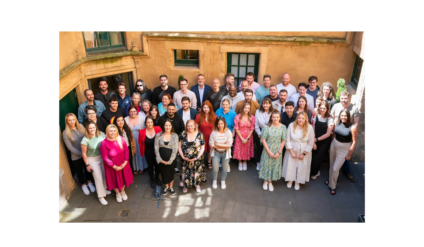If there is one thing you learn quickly in the software industry, it’s that the engineers engaged in architecting, building and developing are overwhelmingly white and male. From niche natural language processing seminars to the largest international conferences like Web Summit in Lisbon, women and ethnic minority coders still occupy less space than their Caucasian male counterparts.
White men are of course more than capable of creating elegant software solutions, so what’s the big issue you might ask? Surely as more women and minorities enter these industries things will level out? The problem is that achieving gender parity in software creation is about far more than fair employment, increasingly it’s being viewed as key to remaining competitive as a software company.
Though science fiction has taught us to think of software as something better than human — logical and incapable of bias — the reality can be quite the opposite. Machine learning requires datasets to train new software products and it is human input that sets the criteria for processing that data. In turn, whether intentionally or not, software can be programmed with inherent bias.
This is a big flaw when we consider the increasing extent to which digital technology is relied upon in a modern democratic society, from banking to the justice system. Once a piece of software has been commissioned, who checks whether an algorithm is approving more men for mortgages or issuing more parking tickets to minorities?
Not only is diversity within a team essential for creating great software products, programmed without bias, it’s essential for tech businesses to thrive as a whole. The more viewpoints you have around the table, the better you will anticipate the needs of a diverse customer base.
Disappointingly, the venture capital industry — the investors who help to fund the growth of technology companies across the globe — is furthering the gender gap by increasingly investing in male founders. According to Fortune, all-male founders received almost $60 billion in venture capital last year compared to under $2bn for female founders. Anyone who argues that women’s ideas simply aren’t as fundable needs to read the 2017 Annual Start-up Report from TINYpulse, just one of a host of studies to find that start-ups with female founders grow faster and achieve stronger overall performance.
There is reason to be optimistic however. The women who played a vital part in the history of computer science — from 19th century computer programmer Ada Lovelace, to NASA mathematician Katherine G. Johnson and software pioneer Dame Stephanie Shirley — are now entering popular culture and the public consciousness.
Organisations like smartSTEMs, Stemettes, CodeClan and Girl Geek Scotland are getting more girls and young women excited about careers in coding and governments have realised that we won’t be in a position to compete with economic giants like China without more women making significant contributions to key industries like artificial intelligence and robotics.
I was recently talking to Svea Miesch, a research and policy manager at ScotlandIS, who, to have “more power over her data”, opted to take part in a coding and data science course with Edinburgh startup Legible Data. Svea said: “I think more girls and women would be interested in coding and digital tech if they had a better idea of the things it allows them to do, not least to work in a dynamic and creative way.”
The Scottish tech industry is forecast to expand more than twice as fast as the overall economy by 2024, yet we’ll need far more women to “eat, sleep, STEM” if we want to fill 12,800 jobs a year with the 4,400 men and women currently graduating in computer sciences annually. Like Svea, the majority of female graduates in the digital technology sector come from a non-tech background, yet many girls of school age, their parents and teachers, are unaware of the career opportunities in tech or how to go about gaining coding skills. If we address this awareness gap, hopefully the gender gap will start to close too.
This article by Laura Westring was originally published in The Scotsman on 11th December 2017



